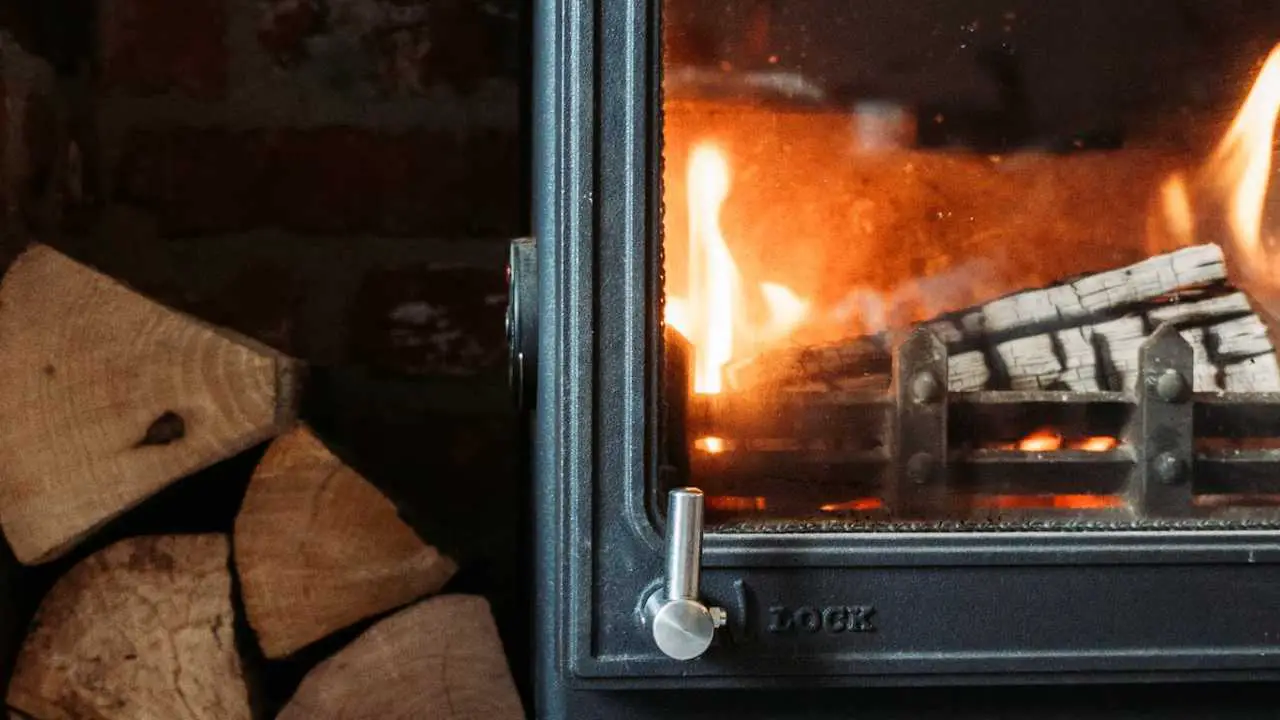Why you should use a Log Burner Fan for better heat distribution
A log burner fan is an affordable and energy-efficient way to distribute warm air more evenly throughout a room.

A log burner fan is a device that circulates warm air from a wood stove or fireplace throughout a room. The device has become increasingly popular among homeowners, as it is a cost-effective and energy-efficient way to heat up your home. In this article, we will discuss the benefits of using a log burner fan, its running costs, and how it works, as well as its negative aspects.
How does a Log Burner Fan distribute heat around your room?

A log burner fan is designed to distribute warm air more evenly throughout a room, which in turn leads to more efficient heating. The device works by converting the heat from the stove or fireplace into energy that drives the fan blades.
The blades then circulate the warm air around the room, helping to reduce hot spots and cold spots. This leads to more consistent heating and a reduction in energy consumption.
How Much Do They Cost to Run?
Log burner fans are powered by the heat generated by the stove or fireplace, so they do not require any external power source. This means that they are energy-efficient and cost-effective to run.
There are no running costs associated with a log burner fan, which makes it a great investment for anyone who is looking to reduce their energy bills and carbon footprint.
Can I Use Log Burner Fans on Radiators?

Log burner fans are designed to work with stoves and fireplaces and are not intended for use on radiators. The design and operation of the device are specific to wood stoves and fireplaces, and using them on other heating systems may not yield the same results.
What Are the Negative aspects of Using a Log Burner Fan?
Although log burner fans are generally safe and effective, there are a few negative aspects that should be considered.
- Increased Noise
- Circulating Dust around your home
How noisy are log burner fans?

When using a log burner fan, one of the negative aspects to consider is that it can be quite noisy. The fan blades rotate at a high speed, which can generate a lot of noise, especially in quiet environments. This noise level can be higher than some people are comfortable with, and it can be a particular issue during night-time when the fan may be more audible.
It is worth noting that not all log burner fans are equally noisy, and some models are designed to be quieter than others. When choosing a log burner fan, it is important to consider the noise level and to choose a model that meets your needs and preferences. If noise is a concern, you may want to consider a fan with larger blades that rotate at a slower speed, as this can help reduce the noise level.
Additionally, you can place the fan further away from your seating area or use noise-reducing materials around the fan to help dampen the sound.
While the noise level of a log burner fan may be a concern for some, it is important to consider it in the context of the benefits that the fan provides, such as increased energy efficiency and improved heat distribution.
Do Log Burner Fans create more dust?

You should also consider that when using a log burner fan is that it can circulate dust and other debris around the room. The fan blades rotate and create airflow that can pick up and move dust particles, soot, and other materials that have accumulated around the fireplace or stove. This can cause respiratory issues for people with allergies or respiratory conditions such as Asthma (learn more), and it can make the room appear dirtier than it actually is.
The increased level of dust and debris circulation may require more frequent cleaning of the room. The fan may be moving around dust and soot that had previously settled on surfaces, causing it to become airborne and settle in other areas of the room. As a result, you may need to increase the frequency of your cleaning routine to keep up with the additional dust and debris in the room.
How to reduce the levels of dust from log burner fans

To minimize the impact of the increased level of dust and debris circulation, it is important to clean the area around the fireplace or stove regularly and to ensure that the fan is positioned correctly. Placing the fan too close to the stove or fireplace can cause it to draw in more debris, so it is important to position the fan at an appropriate distance. Additionally, you can use air filters and other air-cleaning devices to help remove dust and other particles from the air.
Overall, the increased level of dust and debris circulation is a drawback of using a log burner fan, but it can be managed with appropriate cleaning and maintenance. It is important to consider the potential impact on your cleaning routine when deciding whether to use a log burner fan in your home.
Where should I place my Log Burner Fan for optimum heat distribution?

Placing your log burner fan in the right location is key to achieving optimal heat distribution throughout the room. You should position the fan in an area where it can circulate the warm air effectively. For best results, place the fan at a distance from the stove or fireplace, but not too far that it cannot pick up enough heat to operate efficiently.
The fan should be positioned on a flat surface, and it is recommended to place it on the top of the stove, facing the area where you want the heat to go. This can help ensure that the warm air is distributed evenly throughout the room. By placing your log burner fan in the right location, you can enjoy more efficient heating and a more comfortable living space.
Conclusion - Should you use a Log Burner Fan?

In conclusion, a log burner fan is an excellent investment for those who are looking to reduce their energy consumption and enjoy a more consistent and efficient heat distribution throughout their home.
With a range of affordable options available, such as the Signstek Thermal Furnace Fan, TOMERSUN Eco-Friendly Wood Stove Fan, and MONHOUSE Heat Powered Stove Fan, a log burner fan is a worthwhile purchase that can help save money while keeping you warm and cozy during the colder months.

